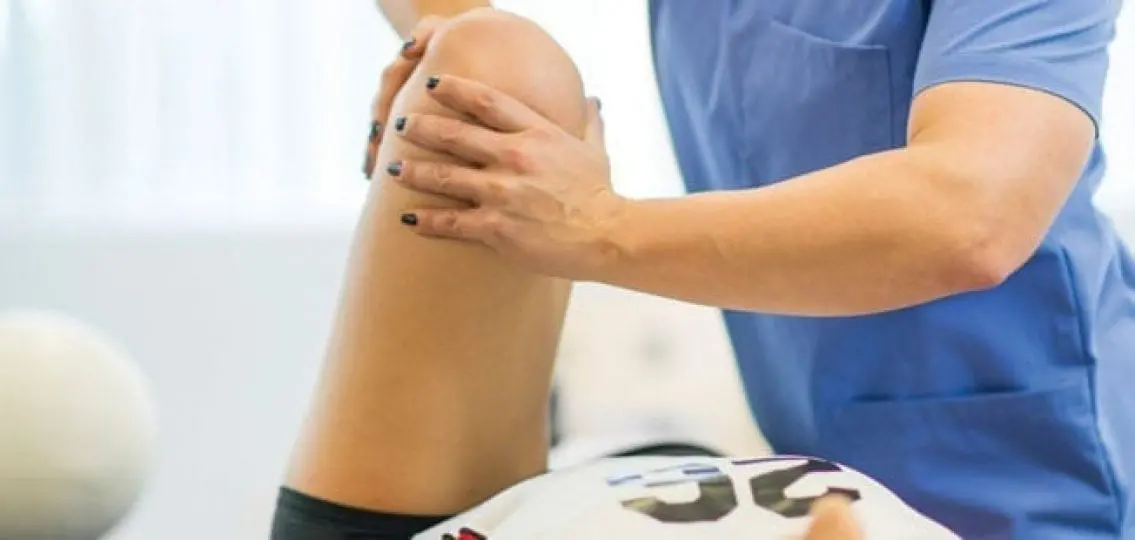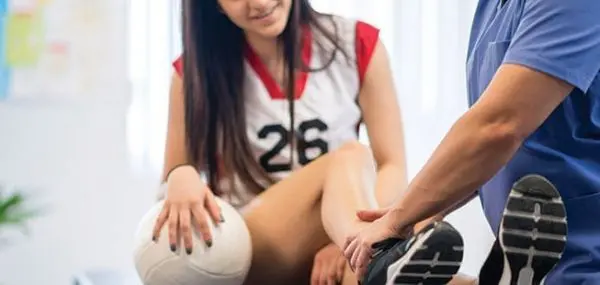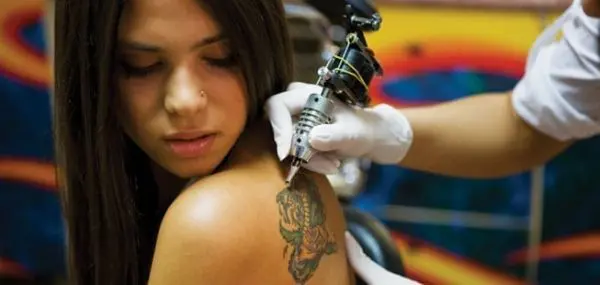Does your teen have a sports injury or other persistent pain? When should you seek out physical therapy for teens? We got some advice from Dr. John T. Myers, PT, DPT, Director of the Physical Therapist Assistant Program at Ohio’s Lorain County Community College.
Teen Physical Therapy
Q: Why would an adolescent need to see a physical therapist?
Myers: We see a range of different issues with teen patients. The majority typically have sports injuries, and a physician has recommended physical therapy as part of treatment. We also see patients with movement problems from an illness, disease, or developmental issues. There may be postural issues such as slouching and having rounded shoulders or poor posture in a teen who has grown very tall very quickly. They may have some bad habits that are resulting in backaches or soreness.
Sometimes we have teens who just hurt at the end of the day. They experience pain that they shouldn’t really have at that age. We see heavy backpacks causing teens to have shoulder and neck pain, stresses on soft tissues, and overuse syndromes that can result in discomfort. Any repetitive activity will really get you.
Q: When is it time to call a doctor for an ache or pain?
Myers: The general rule is “two days and ice.” If your adolescent has discomfort that lasts longer than two days and has iced and rested the area causing pain, then it’s time to call someone. Any time there is numbness or tingling, it’s time to call someone.
Q: What should parents look for in a physical therapist?
Myers: You want to make sure your physical therapist is licensed. The therapist should be someone who connects with your teen. They should take the time to educate and teach, so that the patient understands both the anatomy involved and the workout plan.
The therapist should also give patients some control over their treatment and help them feel that they are part of the process so they learn how to treat themselves. It really should be a partnership. I find that when a physical therapist takes the time to explain, “Here’s what’s causing the problem, and here’s what you need to do to treat it,” teens respond really well and then treatment is much more successful. So often teens are used to people talking over them, or discounting their intelligence. They respond well when we give them credit and talk things through with them.
Q: Do you find that you get more resistance from teen athletes?
Myers: Yes, sometimes we have to negotiate treatment with athletes who are eager to play again and are frustrated at taking time off. We try to educate them and help them understand that you need a balance of therapy and rest so your body can heal. We call that “relative rest,” and our goal is to help those athletes heal without mentally aggravating them. We want them to understand that we are treating the injury long term, not just for the present.
Another problem we can sometimes encounter is the mindset that “therapy has to hurt to be good for you.” We do a variety of exercises or stretches, whether it is for strengthening, or improving flexibility, or range of motion. And there can be soreness that goes with that which can last 12 to 24 hours after therapy. If it lasts longer than that, then the patient may be overdoing it in therapy. Any discomfort should be short-lived.
Q: How important is attitude?
Myers: Teen patients have to be open to physical therapy. We can’t give them a pill and make it better; they have to be active participants in the process. I have found that if we approach teen patients with courtesy, respect, and a good sense of humor, we end up having fun together. Even though sometimes we’re making them work pretty hard.




